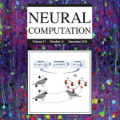Context-sensitive two-point layer 5 pyramidal cells (L5PC) were discovered as long ago as 1999. However, the potential of this discovery to provide useful neural computation has yet to be demonstrated. Here we show for the first time how a transformative L5PC-driven deep neural network (DNN), termed the multisensory cooperative computing (MCC) architecture, can effectively process large amounts of heterogeneous real-world audio-visual (AV) data, using far less energy compared to best available `point' neuron-driven DNNs. A novel highly-distributed parallel implementation on a Xilinx UltraScale+ MPSoC device estimates energy savings up to $245759 \times 50000$ $\mu$J (i.e., $62\%$ less than the baseline model in a semi-supervised learning setup) where a single synapse consumes $8e^{-5}\mu$J. In a supervised learning setup, the energy-saving can potentially reach up to 1250x less (per feedforward transmission) than the baseline model. This remarkable performance in pilot experiments demonstrates the embodied neuromorphic intelligence of our proposed L5PC based MCC architecture that contextually selects the most salient and relevant information for onward transmission, from overwhelmingly large multimodal information utilised at the early stages of on-chip training. Our proposed approach opens new cross-disciplinary avenues for future on-chip DNN training implementations and posits a radical shift in current neuromorphic computing paradigms.
翻译:早在1999年就已经发现5个金字塔细胞(L5PC),其环境敏感的两点层5个金字塔细胞(L5PC),早在1999年就已经发现。然而,这一发现提供有用的神经计算的潜力尚未显现出来。在这里,我们第一次展示了一个变革性L5PC驱动的深神经网络(DNN),称为多感知式合作计算(MCC)架构,它如何有效地处理大量多种多样的现实世界视听(AV)数据,与现有最佳的“点”神经驱动DNNS相比,其能量要少得多。在Xilinx Ultraseration+ MPSoC 设备上,一个新的高度分散的平行执行率估计高达245759\time $50 000美元。在这里,我们第一次展示了一个变革性L5CFMC的跨度模型(即,比半超前学习设置中的基线模型少62 ⁇ 5美元)。 在一个有监督的学习设置中,节能可能达到比基线模型少1,250x(向前传输)。在SULCSUCF5中,最显著的跨级实验的跨轨模型中,为我们当前测试中,为基础化的当前测试中的拟议模型,为MICMISMISMFMLFMLMLMFMFMLA的早期培训中的新阶段,为基础,为基础,为基础,为基础,为基础,为基础的早期培训。



